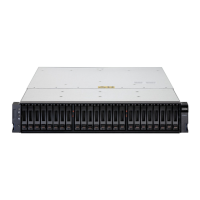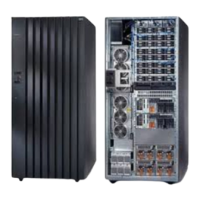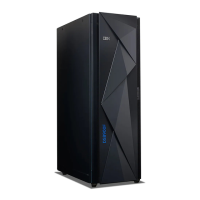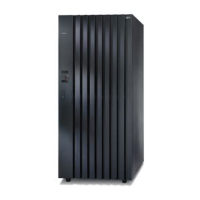Chapter 1. Disk attachment technology 7
Draft Document for Review August 30, 2007 12:59 am 7065DiskAttach.fm
SCSI configurations are sensitive to improper termination. SAS does not have such
problems.
SAS supports much longer cable lengths and higher maximum device attachment than
SCSI.
SAS environments also support attachment of SATA disk drives. In fact, SAS could be viewed
as a technology to transfer SCSI commands and data across a SATA-like physical interface.
SAS was designed to be compatible with SATA on the physical level, but supporting higher
transfer rates and longer cables.
SAS wide ports
Each SAS port includes 4 full duplex links or lanes within a single connector, as shown in
Figure 1-1, with each lane running a speed of 3Gbps. A single lane is used as the path to the
drives - the second, third, and fourth lanes are used as overflow, when concurrent I/Os
overload the channel. For example, suppose the first link is transmitting data at 3 gigabits per
second. If another block of data then needs to be written to disk for example, and link one is
still busy - then link two will manage the overflow of data that cannot be transmitted by link
one. If link one finishes its transmission of data - then the next block of data will be
transmitted on link one again, otherwise another link will be used. In this way, for heavy I/O
workloads, it is possible that all links are being used at certain times - providing simultaneous
data speed of 12Gbps.
Figure 1-1 SAS wide ports.
SAS drive technology
Figure 1-2 on page 8 shows how SCSI and SAS drives are attached to the controllers. The
older SCSI technology used a loop architecture - as shown on the left. If a controller need to
communicate with the fourth drive in the loop, the communication has to pass through drives
one, two, and three. This is slow, and causes problems if any individual drive fails. The
point-to-point topology used in SAS configurations means there is a direct path to each drive
4
4
1
2
3
1
32
